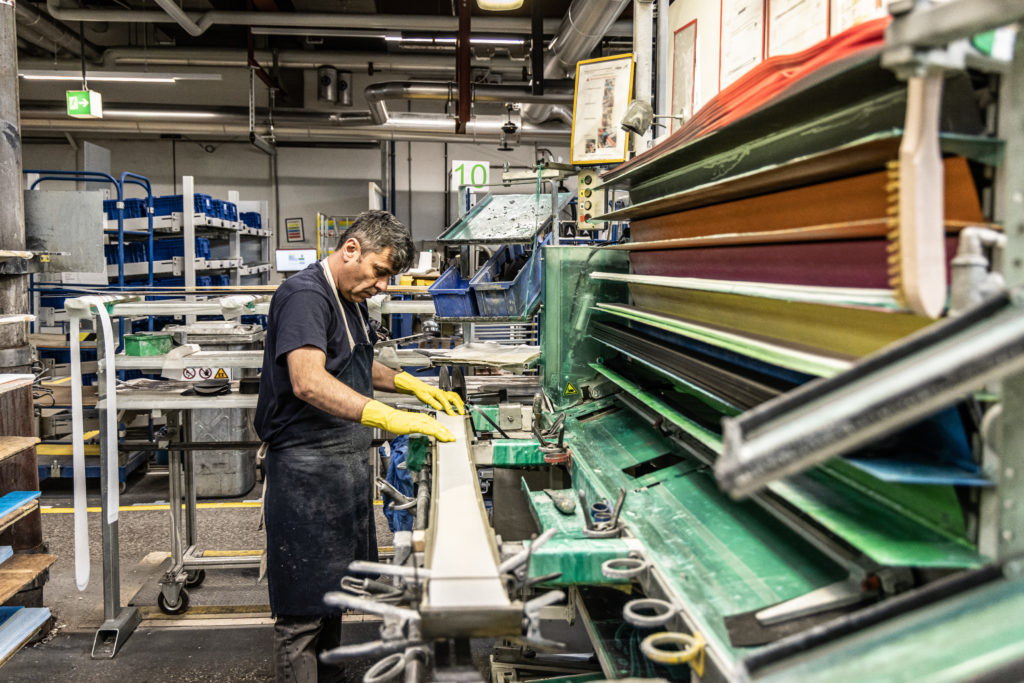
For many brands, manufacturing happens in someone else’s backyard. But not for Atomic. The biggest skiing company in the world boasts equipment made in Austria.
Cradled between the Alps in a town of 4,500 people sits the global headquarters of the biggest skiing company in the world. Atomic manufactures Alpine and Nordic skis just meters from where they are designed in Altenmarkt, Austria*, as well as in Chepelare, Bulgaria.
Simply put, one ski consists of a base, steel edges, wood core, reinforcement materials, ski tip, sidewalls, top sheet, and badges. But what really goes into a pair? Depending on the model, 30 to 40 different steps—and plenty of craftsmanship. We visited the Altenmarkt factory to learn more.
A core made of wood
We begin our tour by stacks of laminated hardwood — strong and long-lasting material that goes in the core of high-performance Atomic skis.
“The wood we use is primarily ash, beech, and poplar, all sourced nearby from Central Europe,” explains Ronald “Ronny” Schwarzenbrunner, Sustainability Manager at Atomic.
Two wedges of wood are used for one ski, with 40% of the wood ending up as sawdust. This by-product is then recycled into chipboard, used for furniture making, for example.
“We ran comparisons for sawdust processing and found that recycling makes most sense,” says Ronny. By recycling sawdust from its skis into chipboard, Atomic saves 18.9 tonnes of carbon dioxide each year—a reduction of 84% compared with wood composting. Burning sawdust for energy would have an even higher environmental footprint.
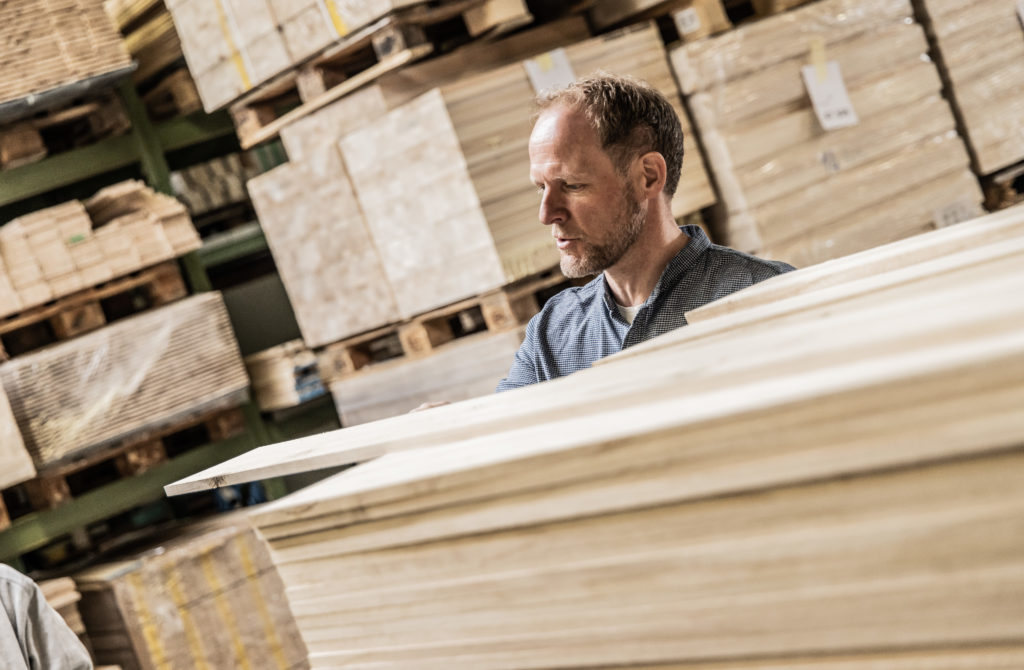
Cutting, grinding, and pressing
Further down the pre-production line we witness the seamless collaboration of robots and humans, one of the few automated parts of the process. Before the CNC stations, two wood wedges are glued together and precisely cut into the shape of a ski.
We see skilled workers shave and grind the wood and add reinforcement. The reinforcement of the core is one of the most sensitive parts of the process. Humidity and grease are detrimental for ground aluminum. Other typical reinforcement materials include fiberglass and steel.
“All the different layers from base to wood core, from reinforcements to top sheet, need massive amounts of pressure and heat to bind together. That’s what the ski press is for,” says Herbert “Herbi” Buchsteiner, Business Unit Director for Alpine Ski & Binding at Atomic, as he showcases a raw ski.
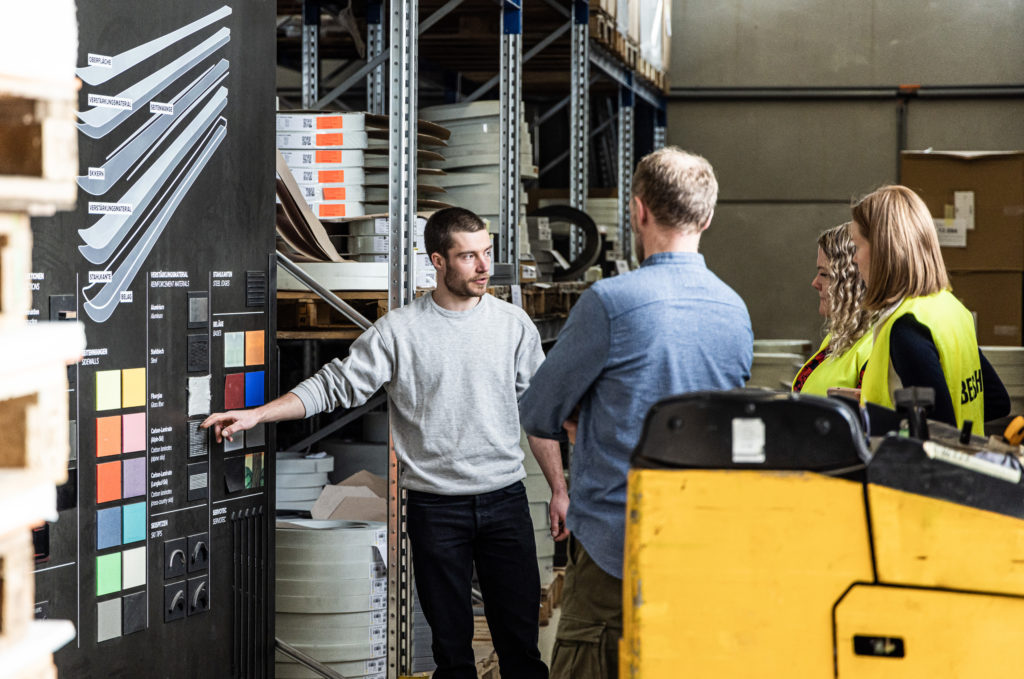
The heat is on — thanks to the next-door power plant
Ski presses run on exceptionally high heat, sourced from an adjoining power plant. By using renewable local wood chip heating instead of oil, Atomic has reduced its impact by 95% and kept 2,176t of CO2 out of the atmosphere each year.
“Everything in the factory runs on renewable energy,” says Ronny. “We’ve been using renewable heat from the power plant since 2005 and bought 100 percent renewable electricity since 2014.”
In addition to delivering heat for ski pressing, the power plant keeps the locals warm. Ronny explains: “The plant generates high temperatures—too high for households—for our factory. Excess heat goes back to the plant, which gets pumped to local households and a spa as district heating.”
Renewable local wood chip heating, LED lighting, heat recovery systems, and waste material recovery capability make the factory the standard-bearer for lower-impact ski production.
Artisanal assembly for every ski
We arrive at the assembly station where each ski is assembled by hand. We watch one veteran employee, Yenner, clean the mold to get rid of glue and residue.
“Cleaning is critical. Any dirt or residue can cause a faulty ski,” explains Herbi as we follow Yenner’s process, which he repeats 50–60 times each day.
First the base, then fiberglass, followed by steel edges, titanal, rubber along the edges, and a layer of fiberglass again.
Then comes the wooden core. “We can also use a transparent top sheet to show the presence of the wood,” says Ronny.
Some more rubber, fiberglass, titanal, and fiberglass. And finally, a top sheet with a QR code with information on who assembled the ski and when.
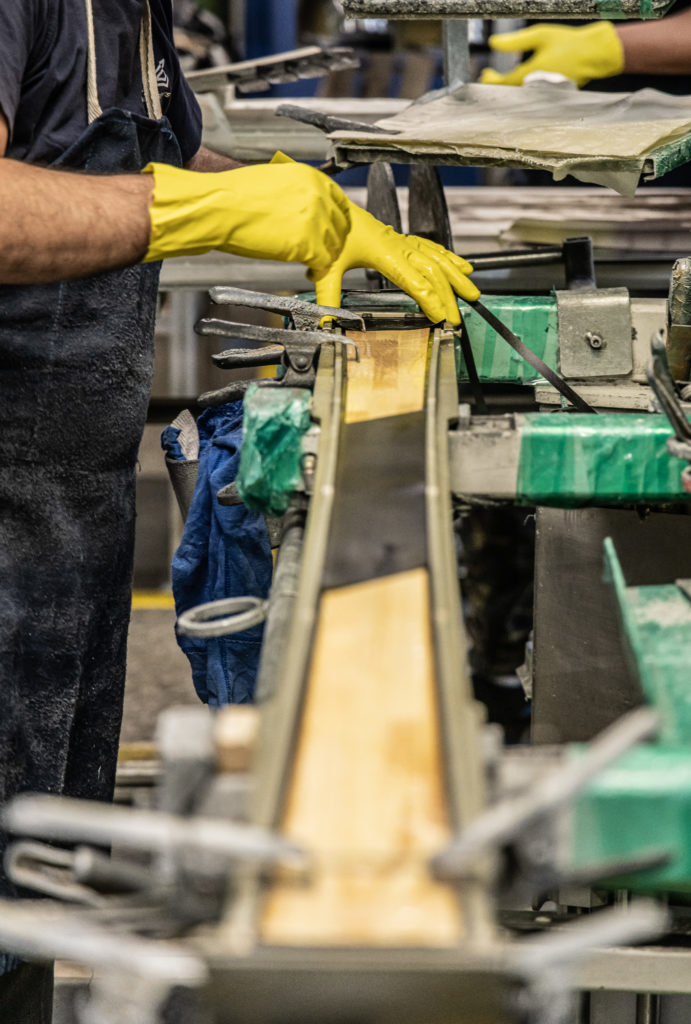
“The code allows us to trace back in the rare case of abnormalities. We do everything we can, in each part of the process, to get everything right,” says Herbi.
“And the sustainability team and I are doing everything we can to take it all apart again,” adds Ronny, laughing. He’s referring to how Atomic is exploring ways to re-use or utilize and recycle the ski materials and components.
The team has carried out detailed life-cycle assessments (LCAs) across a range of skis and boots. The goal is simple: to conduct an LCA every time a product comes up for renewal in its lifecycle. This will allow Atomic to have a baseline emissions figure, and an opportunity to reduce it through innovative design.
Before we leave Yenner, we ask him about the best part of his job, which he’s been doing for 23 years. “Everything,” he says. “I get to build the most important skis: the racing skis.”
Badges and prints for good looks
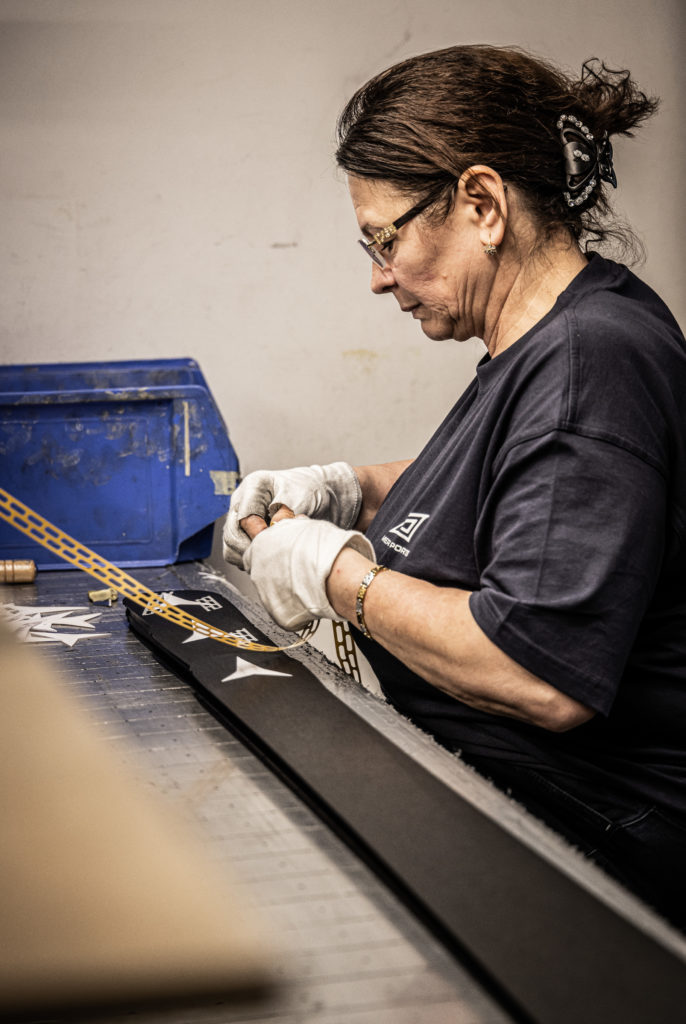
We’re off to see how the skis get their nifty looks with logos, graphics, and unique prints. We watch Zurafet and her colleagues place badges on each ski.
“I’ve been with Atomic for ten years, with two breaks due to maternity leave and then covid. I’m so happy to be back again,” says Zurafet with a big smile on her face.
In the printing room, air quality is constantly monitored. In the Higg Facility Environmental Module (FEM) audit in 2020, Atomic got 95% out of 100% in the area or “air emissions”. Ronny says the laws in Austria are strict, and expectations high, which helps to guarantee healthy and safe working conditions.
To make the skis unique, the factory has digital, sublimation, and screen printing machines, each used for different purposes, and different top sheet and base materials.
“Digital and sublimation printing are great for multiple colors. It’s where you first print on paper, then transfer it on the top sheet. Screen printing is better suited for just a few colors,” explains Ronny.
Finishing touches and off to the slopes
Final grinding is only the second — and last — automated part of the process. We don’t actually see it, as it happens inside of a huge machine, but lucky for us, we spot experts perform manual griding.
“This was done all manually up until two to three years ago. Now it’s mostly automated, but the ski tip is always ground manually,” says Ronny as we watch sparks fly in the hands of a skilled worker.
At the quality control station, an expert with an eye for detail carefully checks each ski and manually bends it to the point of perfection, matching two identical skis together.
To get them ready for logistics, skis need a shrink foil cover. “Packaging is vital for protection, and it forms less than one percent of the climate impact of the ski,” Ronny knows.
With climate change presenting a clear and urgent threat for the winter sports industry, Atomic is committed to being part of the solution. The team together with the Amer Sports group are taking a range of steps to reduce impact and operate more sustainably.
As you enjoy the last rides on spring slopes or fresh Nordic tracks in early winter, it’s worth appreciating not only the opportunity to do so, but also the many skillful hands that have touched your skis before they hit the snow.
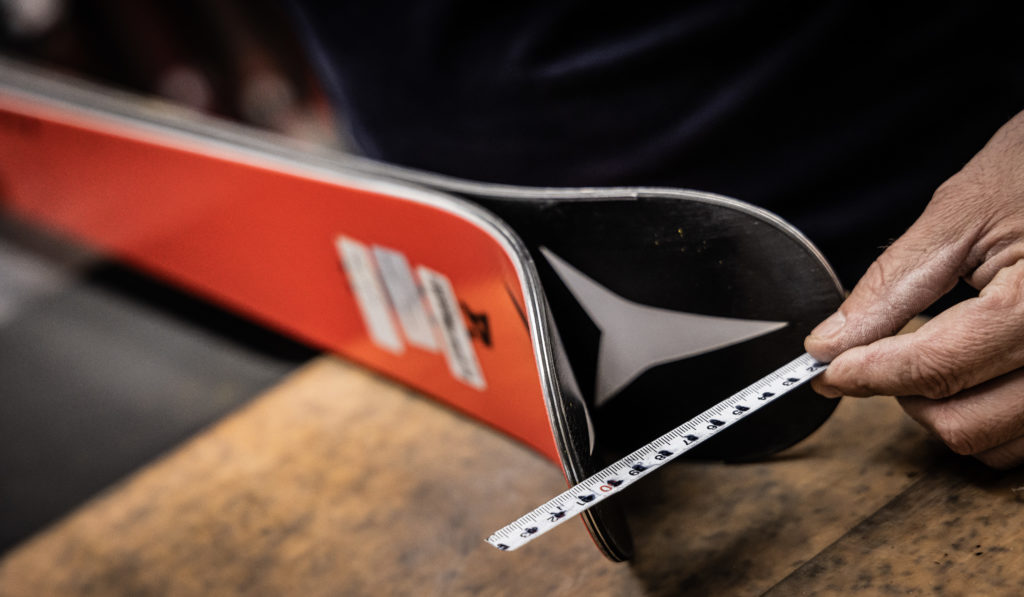
*) Amer Sports is proud to manufacture Atomic, Salomon, and Armada skis under the same roof in the Altenmarkt factory.


